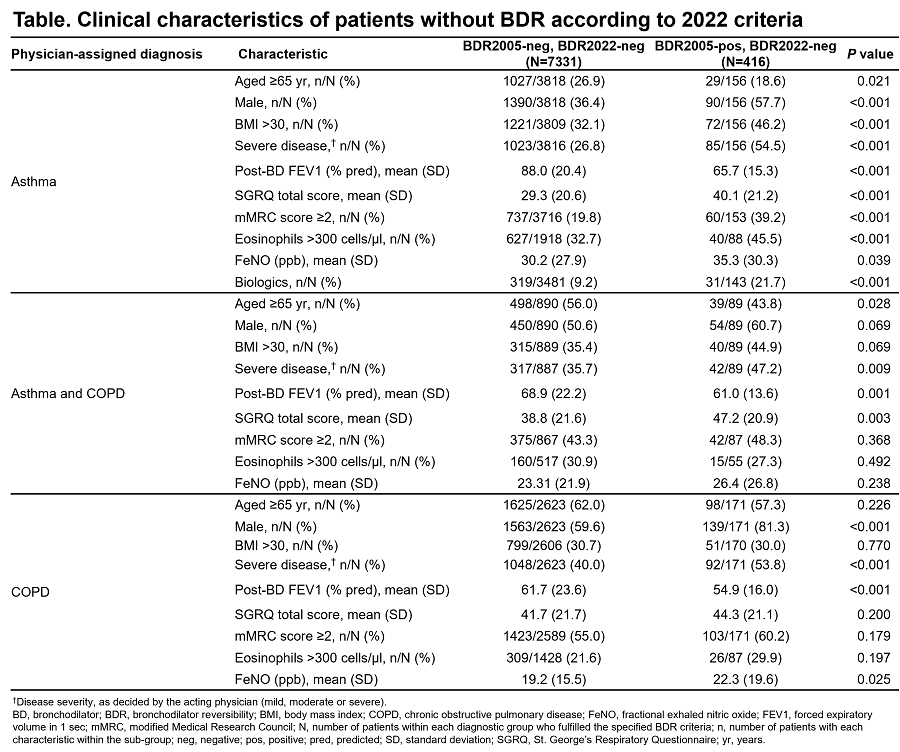Abstract
Introduction: Bronchodilator responsiveness (BDR) assesses reversibility of airflow limitation in patients with airways disease. The recently revised ERS/ATS technical standard recommends new BDR criteria relative to predicted FEV1 (Stanojevic, S. et al. Eur Respir J. 2022; 60:2101499).
Aims: To evaluate how a change in BDR definition?from a relative increase in FEV1 ?12% and ?200 mL (BDR2005) to an absolute increase in FEV1 >10% predicted (BDR2022)?impacts characteristics of patients with physician-assigned asthma and/or COPD in NOVELTY.
Methods: Patients with baseline BDR data were included. Cross-tabulation of BDR2005 vs BDR2022 was performed. Selected baseline patient characteristics are presented descriptively.
Results: Data were available for 8808 patients. The two criteria led to discordant results in 13.6% and 8.1% of patients with asthma and COPD, respectively. Of 7747 BDR2022-negative patients, 416 were BDR2005-positive; patients with asthma in this group were more likely to be <65 years old, male and obese; have higher blood eosinophils, FeNO and symptom burden; and lower FEV1 (Table). Of 7404 who were BDR2005-negative, 73 were BDR2022-positive.
Conclusions: BDR2022 reduces the number of patients with asthma and/or COPD who are BDR-positive.The clinical profile of patients with asthma and BDR2022 differs vs BDR2005, which may have implications for asthma clinical trials that use the 2022 criteria.
